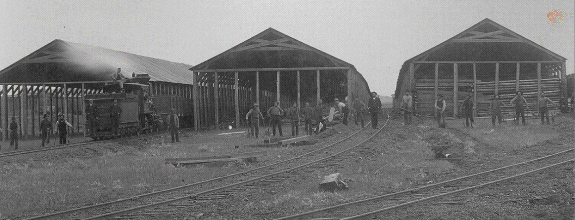
The inefficiency of river transportation motivated Sir Alexander Galt to apply for the government subsidies and land grants needed to construct a narrow gauge railway from Coalbanks to the CPR mainline at Dunmore. In 1885, the construction of the Turkey Trail (a one metre narrow gauge rail that met up with the 1.5 metre CPR mainline) was completed. This rail line was built by the Alberta Railway and Coal Company, a subsidiary of the N.W.C.&N.Co.. The new rail line started at the top of the river valley, where it joined an inclined railway that was used to haul coal up from the drift mines located at the valley level. The Dunmore line was the first of a network of narrow gauge railways that the Galts built in order to move their coal to market. In 1890, a second narrow gauge line was built from Coalbanks to the U.S. border at Coutts, where it joined with a line to Great Falls. This line gave the Galts the ability to ship coal to the smelters of western Montana. Ten years later, the company built another narrow gauge line from Stirling to Cardston in order to serve the needs of the Mormon settlers there.

P19640265000-GP The Coal sheds at Dunnmore. Coal was stored here until it was sent off to market
With the completion of the new lines, the Galt company had obtained a reliable means of transportation for shipping its coal to customers throughout western Canada and the United States. By 1893 the Galts supplied coal along 3220 kilometres of railway line. As payment for the construction of these railways, the Galt company received land grants from the government that eventually amounted to 514 726 hectares of land to the south and east of Lethbridge.
Previous Page | Exhibit Contents | Home | Navigation Information | Glossary | Curriculum Guide | Next Page
Copyright © 1996 Sir Alexander Galt Museum. All rights reserved.